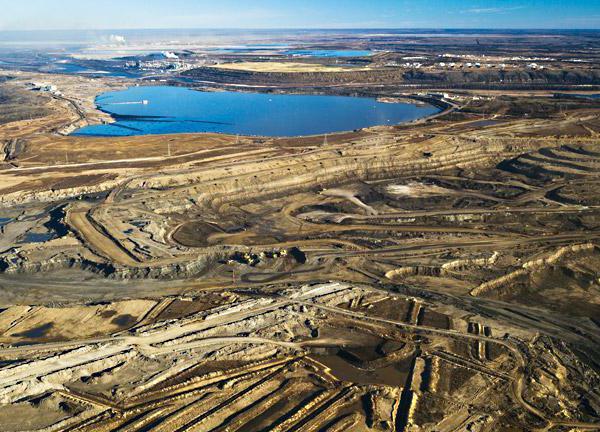Throughout the entire historical period of the formation of the state as a political institution, environmental management fees acted as one of the main sources of income. Let's consider it in more detail. 
History reference
Since ancient times, there have been various types of environmental management fees. So, land tax was considered the most common form of mandatory payments. In ancient Greece, Rome, Egypt, its accrual scheme reached a rather complex level and was highly accurate. State forests and lands also acted as one of the first sources of funds to the treasury. In the Middle Ages, regalia was widely developed. They were on the receipt by the government of income from the provision of the opportunity for citizens to carry out certain activities. So, in Russia during the time of Peter the mountain regalia was widespread. Due to it, payments to the treasury of the state came from entrepreneurs engaged in mining. 
Current situation
Today, many countries are turning not only to fiscal priorities in the field of charging for environmental management, but also take into account its regulatory function. Many natural resources are non-renewable and exhaustible. In such conditions, the corresponding goal of introducing a payment for environmental management is formed. It consists in regulating the rational exploitation of natural resources, reducing the negative impact on the environment of business entities. Of key importance are protective measures. Payment for environmental management is a fairly large group of fees, taxes and other mandatory contributions. Features of their calculation are associated with the purpose and content of a particular type of resource, the mechanism for providing it for operation. 
Legal aspect
Payment for environmental management is established in accordance with the following regulatory enactments:
- Government Decree No. 344, which defines the standards for deductions for emissions into the atmosphere, underground and surface waters of polluting compounds by mobile and stationary sources, the disposal of consumption and production waste.
- Federal Law No. 7 (as amended by the Federal Law No. 118).
- Government Decision No. 632, which regulates the procedure according to which environmental management fees are levied from entities for waste disposal, environmental pollution and other negative impacts.
- Federal Law No. 89.
- Federal Law No. 96.
- Government Decision No. 1310, which regulates the procedure according to which payment for the use of natural resources is charged from economic entities for the discharge of effluents into the sewer systems of settlements.

Classification
Payment for environmental management is charged (established) for:
- Environmental pollution by heat, noise, ionizing, electromagnetic and other physical influences.
- Air emissions of polluting and other compounds.
- Disposal of consumer waste and industrial waste.
- Discharge of hazardous and other harmful compounds, microorganisms into groundwater, surface water and catchment areas.
- Soil pollution, subsoil.
Accrual Procedure: General Information
The rules by which the payment for environmental management is calculated, its maximum size, are approved by government decree No. 632. This normative act contains a sufficient number of requirements with which you can isolate the object, the procedure and base of accrual, determine the circle of obliged entities.The payers are organizations, individuals and legal entities that carry out any activity on the territory of the Russian Federation that is associated with the exploitation of natural resources. 
Base of calculus
It is determined for 3 types of waste disposal fees:
- Within the permissible limits.
- Within the established limits.
- Excessive limit.
In accordance with this, the accrual order is differentiated:
- When disposing of waste within acceptable limits, the fee for nature management is calculated by multiplying the rate on the amount of pollution.
- If the environment is polluted within the limits, accrual is carried out by multiplying the tariff by the difference between the standards and the maximum values.
- When waste is placed in excess of the established limits, it is calculated by multiplying rates by the excess of the actual volume over the established norms and repeated multiplication by a 5-fold increase factor.

Important point
It should be noted that if the subject does not have a duly issued permit for discharge, discharge of polluting compounds, waste disposal, the entire volume will be considered as over-limit. In this case, the accrual is carried out according to the third method. The rates of obligatory payments for negative impact on nature are set today by government Decree No. 344. Its provisions formulate the standards for the corresponding deductions.
Additional clarification
Clause 1 of the Letter of Rostekhnadzor No. 04-09 / 169 contains a reference to the Federal Law No. 7, Article 16, p. 1. In accordance with it, the negative impact on the state of the environment is currently paid. Deductions, according to the Procedure for their formation and determination of maximum permissible pollution volumes, are made for the disposal, discharge, emissions of consumption and production waste. In accordance with the definition of the Constitutional Court No. 284, the obligation to pay applies to individual entrepreneurs and legal entities that have a harmful effect on nature. Thus, enterprises whose business is the sale of goods, the provision of services and other commercial transactions that negatively affect the environment, must fulfill the obligations of taxpayers in full. To prevent harmful effects on nature in the course of economic and other operations, standards for maximum permissible pollution are formed. 
Conclusion
Environmental management fees should form the economic basis for regulating system-wide environmental functions. These contributions include the indirect exploitation of resources. It consists in the indirect use by people of certain natural elements in the process of life. In particular, it includes exploitation of the planet’s surface as a natural basis of the ecological and economic system, thermal pollution due to heat losses in industrial and residential buildings, violation of the ecosystem’s functioning scheme when placing certain objects, and so on. Payment for the use of natural resources is established by assessing the potential, volume, importance of a particular element of the environment that acts as a technological raw material. Along with this, probable damage is also taken into account, which in many cases can be unpredictable, for example, in case of accidents, violations of technological rules, etc. In recent years, the state has been increasing its influence on the processes associated with nature management in order to maintain limited reserves of the country's natural raw materials.
